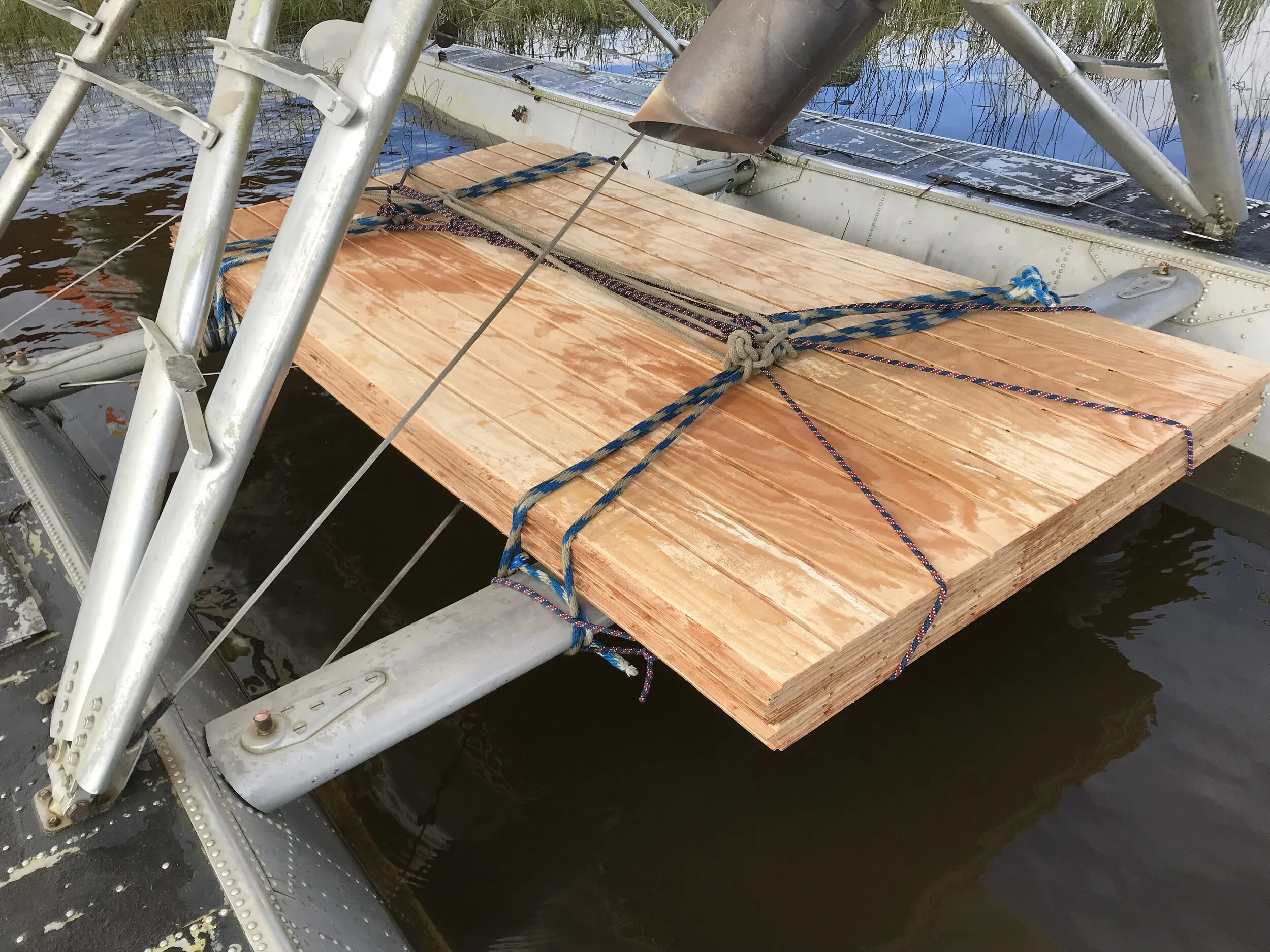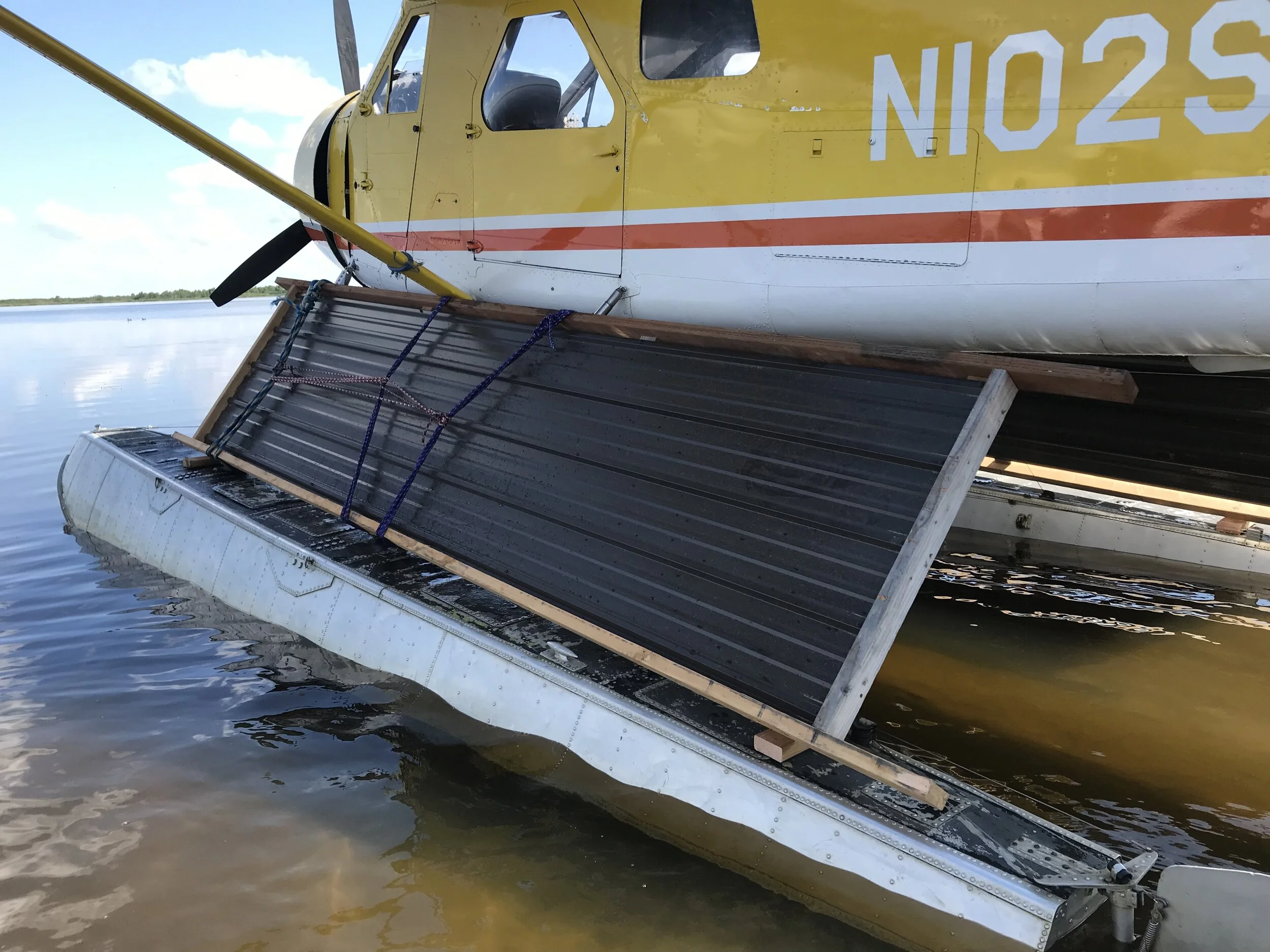It’s All about the Beaver
The work horse of the North. Both Alaska and Canada use the DeHavilland Beaver almost exclusively, and for good reason.
The Beaver is a high wing, single engine, semi-monocoque fuselage, up to 7 seats, with a 450 HP Pratt & Whitney radial engine.
DeHavilland is a Canadian aircraft manufacturing company that was established in 1928 in Britain. A subsidy of the company was brought to Canada in the 1930’s to build moth airplanes for the Canadian Air Force. After world war two, the company began producing indigenous designed aircraft for general aviation and commercial use. One of those aircraft was the DHC-2, better known as “The Beaver.” The Beaver was unique right from conception as the engineers and designers had pilots with them side by side through out the entire design and engineering process. Some of those pilot produces ideas included things like: A large cargo door that can fit a 55 gallon drum; Belly fuel tanks instead of wing tanks (hard to fill wing tanks when your floating on the water); Oil reservoir access in the cockpit; and capability to haul external loads. The idea was that the aircraft was designed by pilots, for pilots specifically operating out of the bush or environments where there was very little infrastructure or support for aircraft. The airplane was actually designed first as a float plane with conventional gear as an after thought. It was also designed to have many roles to include, cargo, crop dusting, aerial photography, aerial topdressing, utility, and hauling passengers. It was used by several countries in their armed forces, as well as commercial and general aviation. It can be equipped with landing gear, straight floats, amphibious floats, straight skis, and wheel skis. Another very unique feature about the Beaver that rivals it from almost all airplanes, both past and present, is that it came certified from the factor to haul external loads. In most airplanes, if you want to haul external loads, you must send in an application to the FAA (Federal Aviation Administration) for approval. Most of the time it is approved, but it is still a process that takes time and headache. Some external loads that have been hauled in Beavers are plywood strapped to the spreader bars between the floats, loads of lumber strapped to each float, up to 16 foot in length. Boats, canoes, metal roofing, ATV’s and anything else that can be safely tied down to the floats. It truly is an amazing airplane.
Here is an example of an external load of T1-11 secured to the spreader bars.
Yet another example of an external load, this time of corrugated roofing material. The Beaver can do it all.
Lets talk a little about performance. The Beaver was designed to be what’s call a STOL aircraft or “short take-off and landing.” The wing design is one for lift, not for speed. The wing has a large camber, or in laymen terms, it has a fat wing. The larger the camber, the more lift the airplane will generate at a lower speed, up until a point of course. Basically the shape of the wing creates a low pressure on top and a high pressure on the bottom. The high pressure wants to join the lower pressure which creates lift. If a wing has a large camber, it will produce higher lift at a slower airspeed, however, it does sacrifice speed because of the extra drag from the “thick” wing or larger camber. This is why the Beaver is not a speed demon among other contributing factors. Another unique feature of its STOL design is what’s called “flaperons.” In order for an airplane to create a similar amount of lift at a slower airspeed, if equipped, the pilot can deploy the flaps. The flaps can actually manipulate the camber of the wing, thus producing more lift at a slower speed with a sacrifice of speed, which is exactly what you want when it’s time to take off or land. The flaps are anywhere from about 1/3 to 3/4 of the wing length. They can not go the entire distance as the wing has to also have ailerons. Ailerons are what “bank” the airplane to the left or right. Well, now that you know what an aileron and a flap is, maybe you have used deductive reasoning and figured out what a flaperon is. You guess it, it’s when the flaps and ailerons are combined. The way it works with the Beaver, is when you set the flaps from 0 to 15 degrees down, the ailerons actually go down at the same exact degree until they reach 15 degrees. When the ailerons reach 15 degrees they stop and remain there until the flaps are move back to their normal position. So basically, you have a wing, that has flaps going all the way across the entire trailing edge of the wing, that produces the absolute maximum amount of lift for that given wing. Pretty cool huh? This is one of the factors that help the Beaver carry a very large amount of weight yet still only use a small amount of space for take off and landing. With only the pilot and 2 1/2 hours of fuel, the Beaver can be airborne in normal conditions in roughly 700 to 800 feet on the water. The landing distance is around 500-600 feet with the same weight and conditions. When loaded to its maximum gross weight, 1800 to 2000 feet is average. These are my personal observations. They could differ from pilot to pilot. With a cruise speed of 105 mph, we won’t be breaking any speed records. The fuel burn is around 25-28 gph on average. This includes take off, climb, cruise, and descent. It has a belly fuel capacity of 95 gallons with roughly 40 more gallons available in the wing tip tanks. Fuel endurance with every tank topped off is about 5 hours and 15 minutes before the tanks go dry or about 550 miles.
So, in a nut shell, the Beaver is a perfect airplane for the bush. In this day in age, there is nothing that can really even compare. The bummer of this whole thing is that we lose a number of Beavers every year to age, incidents, and accidents. They are slowing going away, and like I stated before, there is nothing left to take its place. There are a few modern airplanes like the Kodiak Quest or the Cessna Caravan that try really hard to be similar, but when you compare them head to head, for a bush operation, the Beaver is unmatched. There really isn’t a big enough market for a bush specific airplane for a company to invest millions and millions of dollars when the only major players would be Canada and Alaska. There is a company called Viking Aircraft that actually owns the right to the Beaver and in theory, could reproduce them anytime. Of course the start up money would be absolutely ridiculous and the consumer cost of purchasing a finished product would be similar to a Caravan or a Quest, costing any where from 1.5 million to 2.5 million which is just not affordable to the ma and pop outfitting/air taxi companies, but, we are not going to end this blog on a negative note!! The Beaver is a freaking awesome airplane, reliable, hardworking, and bullet proof. The Ptarmigan (pronounced, Tarmigan) is the Alaska state bird. I think they should change it to the Beaver.
YEHAW!
Some interesting facts about one of our company Beavers, N734Q. If you’ve ever had a trip with Papa Bear, you are familiar with the “Army Beaver.” 34 (as we refer to it) actually did start life out as a military Beaver. It was purchased by the Army from the factory and its actual model number was not DHC-2 but the military version, an L-20. The army registration number was 58-2063 US Army # 1943. It served in the Oregon Nation Guard from 1959-1974. In 1974 she was put in storage until 1976 when the U.S. Department of Agriculture deputized her into service. In 1986 she was donated to the Combat Air Museum in Topeka, KA. She remained there until she was bought and rebuilt by Ptarmigan Air in 1998 and remains with Ptarmigan Air to this day. Ptarmigan Air is the air taxi certificate that Papa Bear Adventures operates under.
Here is an actual picture of N734Q when it was in the United States Army.
Here’s N734Q as a Department of Agriculture aircraft. It was registered as N217GB at the time.




